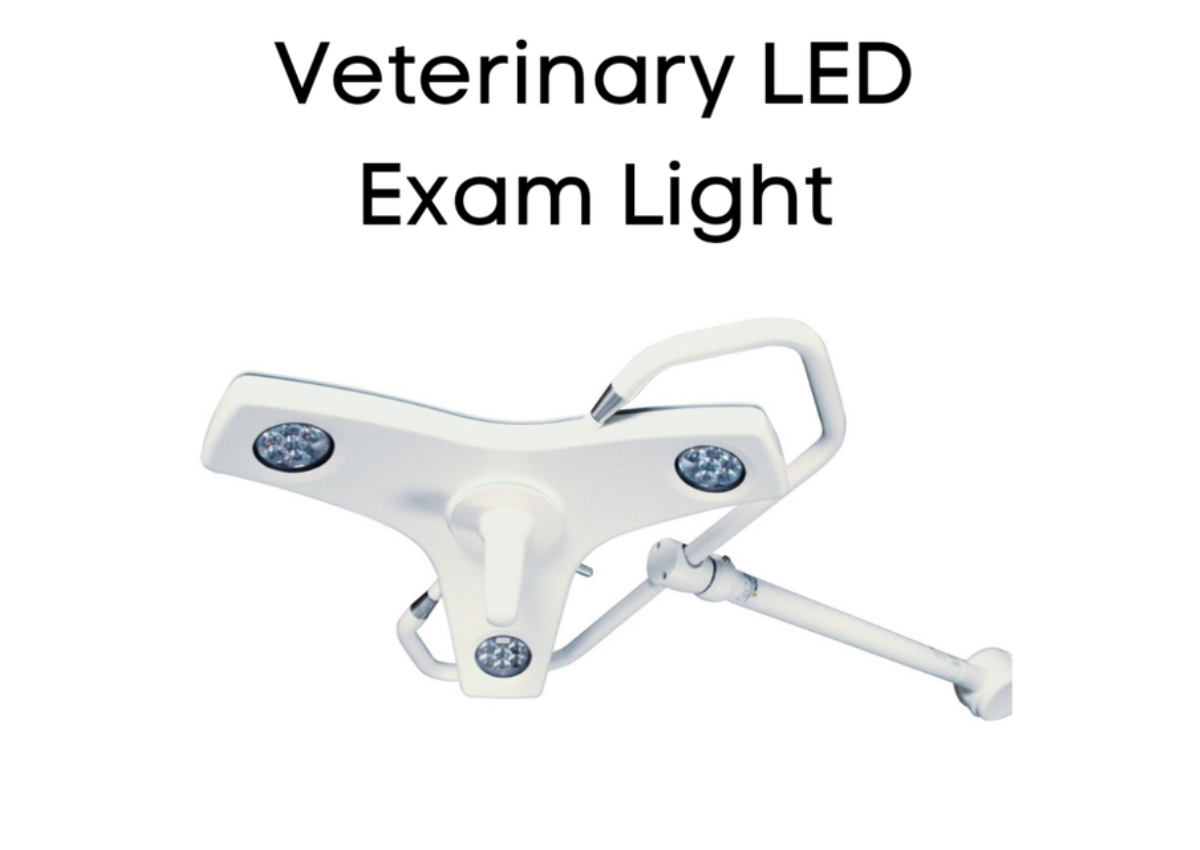Veterinary Lighting: Choosing Lights for the Exam Room
Veterinary exam lights are crucial pieces of equipment. But it’s easy to overlook lighting, which is such a normal part of our home and business lives that we might not consciously think about it that often.
Here, we’ll discuss veterinary exam lighting, how exam room lights affect daily practice and some considerations for choosing the best lighting in your clinic.
Why Do Veterinary Exam Lights Matter So Much?
Good lighting, set up properly for the space, can have implications on the medical aspects of a patient’s visit, the client’s experience, and more. Here’s how…
Sufficient ambient light in the exam room is required to perform a patient’s physical examination.
Additionally, a focused light source allows the veterinarian and other team members to see better. This means better visibility for spaces such as inside the patient’s mouth or between their toes. It also potentially means discovering more subtle lesions such as skin, fur, and eye changes.
Lighting quality—including brightness, color, and flicker—can affect mood. This may carry over to staff, patients, and clients alike.
An adequate light source allows a veterinarian or team member to highlight lesions or other aspects of the physical examination during client education. Although explaining things with words is important, helping the client visualize what you’re talking about can be worth a thousand words.
From a practical standpoint, veterinary exam lights affect the practice’s monthly electric bill and may alter exam room temperatures. And adequate lighting is probably better for eye health for all team members in the long term.
Ambient Light in the Exam Room
Veterinary exam room light requirements vary depending on the space in which they’ll be used. For example, larger exam rooms may require more lighting than smaller ones. And light sources may appear different in rooms with natural light than they do in rooms with no windows.
First, consider natural light sources. Natural light is calming for pets and humans alike. But it’s variable.
Maybe light from the window is perfect at certain times of day, but insufficient in the evenings or on rainy days. And maybe sunlight from the window becomes blinding at sunset.
Add window shielding for times when sunlight is uncomfortably bright. Supplement with indoor lighting. And have blackout curtains for times when total darkness is needed, such as during an eye workup or Wood’s lamp examination.
Here are some additional factors to consider…
Type of lighting. Common options include incandescent/filament, fluorescent, and LED. LED lights are popular due to their efficiency, i.e., low heat, long lifespan, and cost savings by operating with less energy.
Brightness. For ambient lighting, soft light that mimics daylight color is generally favored. Soft light is considered more calming than bright light (for humans and animals alike).
Flicker and hum. These factors may cause stress or discomfort in some people and animals. In general, modern LED lights are quieter than fluorescent. In terms of flicker, there is some debate as to how much people and animals are affected by this and which type of lighting is best. But overall, the flicker of high-quality LEDs is considered less bothersome because it is less visible to the naked eye.
Focused Veterinary Exam Lighting
Ambient lighting is often supplemented by an additional light source—one that is bright focused, and moveable.
A common example is a wall or ceiling-mounted LED exam light on a moveable arm. This light source can be moved to focus on parts of the body that need a closer exam (the patient’s ventrum, ear, or mouth, for example).
Choosing a moveable light source on an arm with minimal drift helps keep the light where you want it, to facilitate the patient’s physical exam and highlight lesions for clients.
Here are some qualities to look for in a veterinary exam light…
Type of lighting. LED lights are popular due to efficiency, brightness, long lifespan of the bulbs, and the fact that they produce less heat than many other types of lighting.
Settings/dimming options. Some staff members require brighter lighting to see, while others may get headaches or discomfort with very bright lights. Different brightness settings, or dimming options, can solve this problem by allowing everyone to adjust the light to their preference.
Shadows. Look for exam lights designed to reduce harsh shadows, which allows for better visualization of the area you’re looking at.
Color rendering index (CRI). A color rendering index of 80 or above is ideal, for less color distortion. (This is true for ambient lighting, too.)
Lighting Up Your Exam Rooms
A focused veterinary exam light, together with comfortable ambient light, can make a great combination for a veterinary exam room.
This combo allows for a comfortable, more soothing space that doesn’t feel bright and sterile like a hospital—and yet, a vet can switch on the brighter exam light when needed to make sure they see everything, for a full evaluation and documentation in the medical record.
As with any equipment purchase, consider financing options, warranty and service plans, ease of cleaning, and whether used veterinary lighting might be a good option for your practice.
Adequate lighting that is easy to use and adjust will help make the room comfortable and make daily practice flow a bit easier.
Written by: Dr. Tammy Powell, DVM



